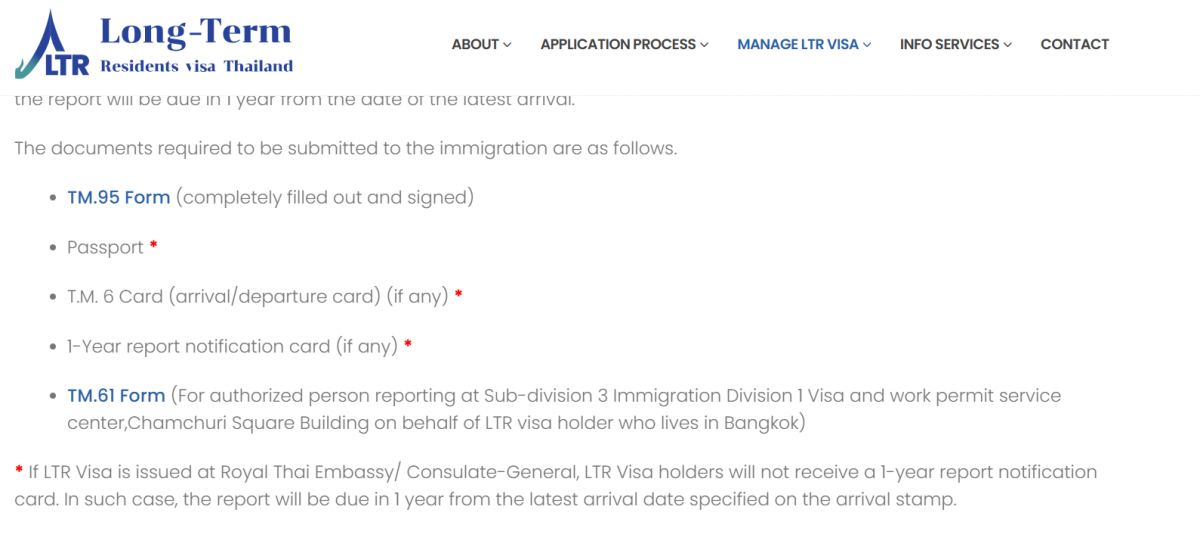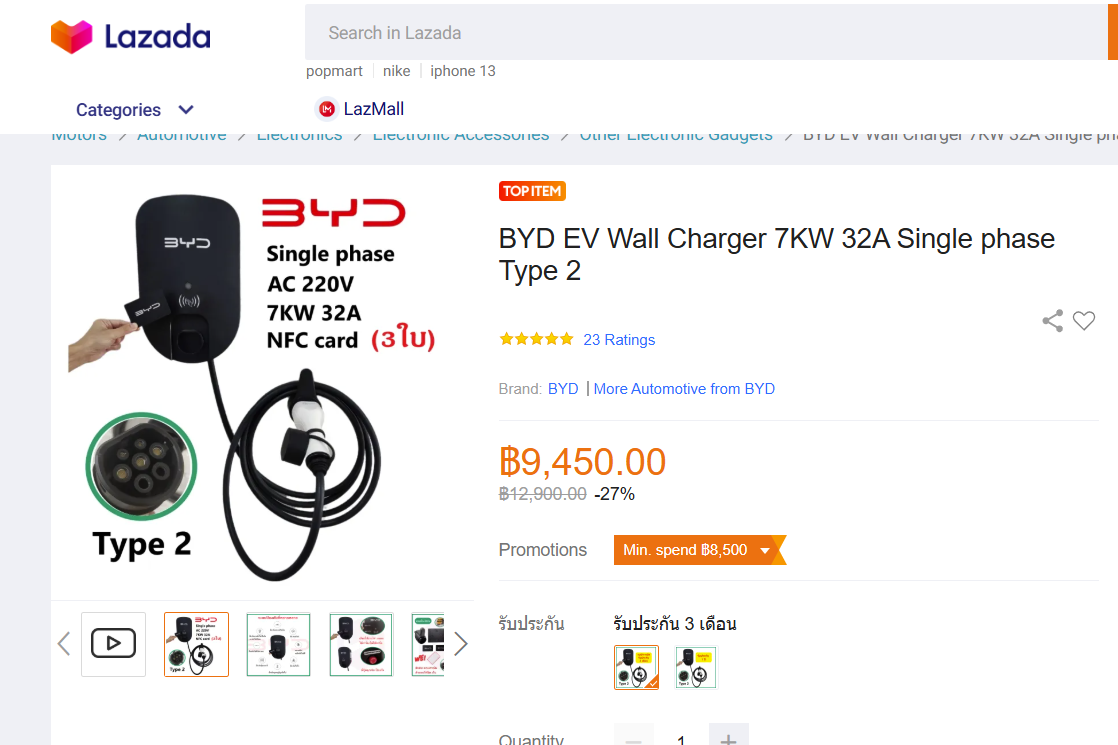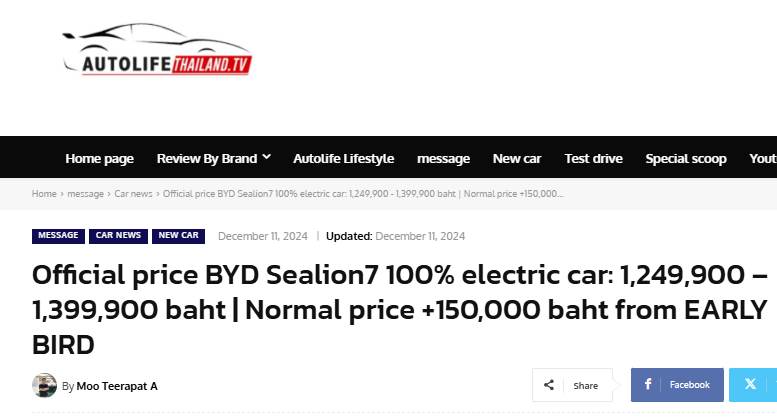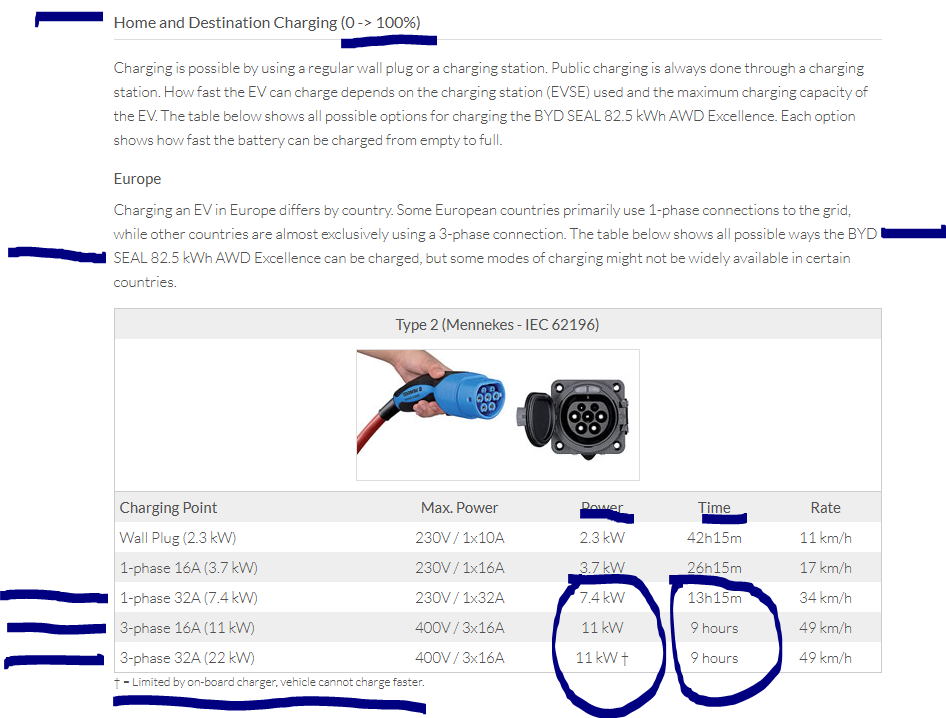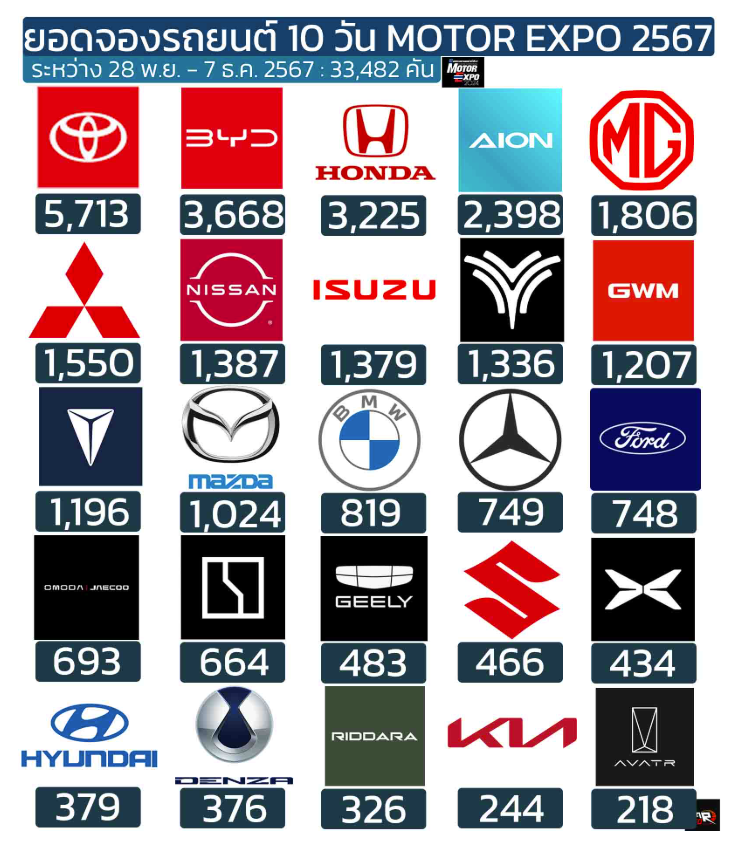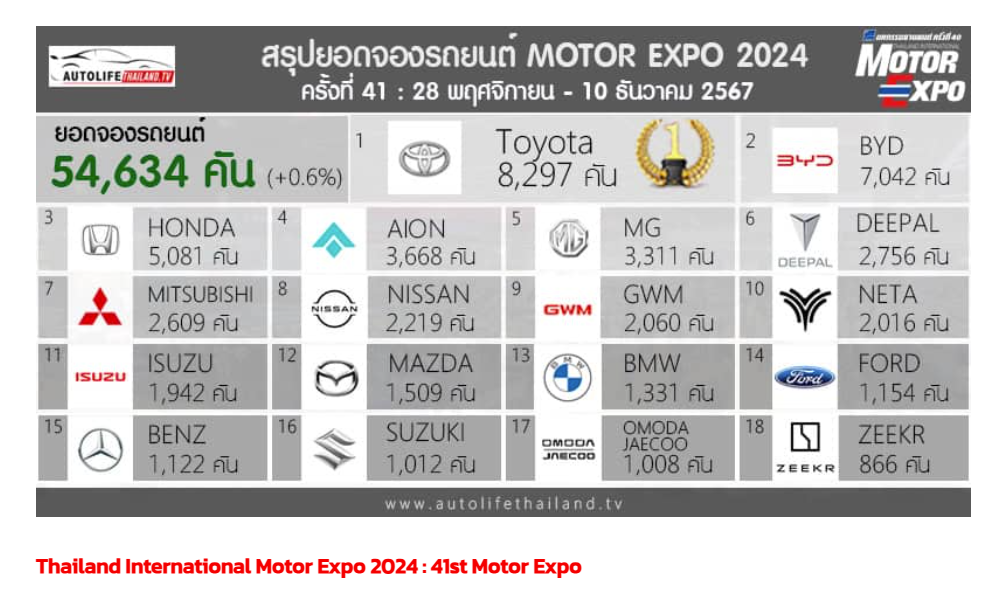-
Posts
29,060 -
Joined
-
Last visited
Content Type
Events
Forums
Downloads
Quizzes
Gallery
Blogs
Everything posted by Pib
-
As FYI regarding 1 year address reporting at BOI/Chamchuri Square Immigration I did my 2nd report today...hard to believe I'm just a few days short of having my LTR Pensioner visa for 2 years already. Anyway. at the BOI website under the Manager LTR Visa pull down menu they list the forms/docs required to do the reporting. However, when went today I had prepared the 4 required items (but not the TM61 since I was doing my own reporting) and the only thing they required from me was the TM95 and last year's 1 year address report receipt/notification. They "immediately" handed me back copies of my passport and TM6 card without review. Now, if reporting at another office they may require all the items listed below but they sure didn't at BOI/Chamchuri Sq Immigration. Total time "within" the immigration office was only about 5 minutes...really fast. Can not do the report online. BUT my round trip drive time this afternoon from my western Bangkok home to the central Bangkok Chamchuri Sq Immigration Office was around 2.5 hours as traffic was horrendous (kinda typical for central Bangkok with various road construction project underway that snarls traffic). Happy Holidays. https://ltr.boi.go.th/page/1-year-reporting.html
-
Little info provided regarding the EV; mostly a video of his visit to Thailand on this trip.
-
In the last half of his video he tried to use a "Shell" charger in the ReverSharger app and when scanning the charger's QR code there was just buffering....couldn't get the charger going. I have used/attempted to use "Shell" chargers in the ReverSharger app 4 times at 3 different locations. Each of those 4 uses was nothing but problems such as the app not recognizing the charger/QR code....or I was able to get the charging to start but when trying to stop the charging short of 100% it was very hard for the app to recognize the charger's QR code or after repeated scans of the chargers QR code where apparently nothing was happening until after around 3 to 5 minutes the charger would then stop the charging....it was like the app was able to scan the QR but then the charger took 3 to 5 minutes to respond and stop the charging. Based on my experience I can ""not recommend those charging locations identified in the ReverSharger app with the Shell icon (i.e., looks like seashell) as I had nothing but problems...and Byorn had his problem also with the Shell charger. Like I said, I've tried/used 4 Shell chargers at 3 locations.....all had similar problems. And when driving by a Shell charger I rarely see people using them....maybe because they can be a pain to use due to "non-response, slow response, etc." And poor Bjorn may have really been trying to use the PTT charger during those 12 hours or so between the evening of 2 Dec and morning of 3 Dec that PTT Station Pluz was doing the transition from the old app to the new app. I know he added some text to the video saying he attempted the charge 4 days before 2 Dec. But what Bjorn experienced is what was happening during the late evening 2 Dec to early morning 3 Dec old app to new app transition period. During that period chargers no longer appeared in the old app as it was being retired and even in the new app they would not appear until just before 8am 3 Dec when the new app went fully active. Out with the old app, in with the new app.
-
When I picked up my Atto in late Oct 2023 the salesperson point out "in English" to be sure to accomplish the warranty service check-ups plus or minus one month OR plus or minus 1,000Km. I had the 3 month/5,000Km checkup done at 2 months 3 days and 4,480Km. I had the 1 year/20km checkup done a few days under 10 months and at 19,200. Had it done a little over 2 months before 12 months since I was within 1,000km of the 20,000Km checkup. I'm now little under 14 months and have driven 27,700Km. At the 12 month point I was probably around 23,000km. A tire rotation every 10,000K is a typical recommendation for all tires....has been as long as I can remember. One of those recommendations from tire manufacturers to allow the tires to last longer and also from tire/repair shops so they can make money on rotating the tires. However, BYD will only accomplish a "free" tire rotation every 20,000km under their warranty program for Thailand. If you want them to do it every 10,000Km you will need to schedule maintenance and "pay" for the rotation. BYD owners in other countries operate under slightly different BYD warranty warranty rules and in Oz they have to pay for all checkups with the exception of the courtesy 3 month/5,000km checkup, whereas, in Thailand all checkups for 8 yrs/160Km are free.
-
Well, if I understand above correctly and considering that the great majority of vehicle buys in Thailand are financed (and just for discussion let's assume all 76K of above mentioned EV registrations for 2023 were financed) then dividing 76,314 registrations by 90,000 reported sales gives almost a 85% loan approval rate which means a15% loan rejection rate. A loan rejection rate far lower than around 50% that some industry groups keep whining about. Now maybe EV buyers are better off financially and experience a much lower loan rejection rate than many ICEV buyers. Maybe a lot of the loan rejections occur for income people (let's say below Bt20K/month) who are trying to buy an ICEV pickup truck or compact car....lower income folks who simply don't consider buying an EV for whatever reasons. I feel if the banks would release detailed data on loan rejection rates we would see the great, great bulk of rejections apply to lower income applicants with the great, great majority trying to buy a ICEV vehicle such as a pickup truck or compact car. But that's just a gut feeling I have....can't provide any reference....just the feeling I get from the nature of numerous media releases this year and my own Thai in-laws. While loan rejection is definitely impacting vehicle sales (EV and ICEV) the other two key factors of high household debt level and people being gun-shy of buying right now due to the ongoing vehicles price-war may be bigger factors in comparison to the loan rejection factor as to why vehicles sales have been generally sluggish for the last two years.
-
Some partial quotes from above Bangkok Bank Sep 2024 article...and I have added some comments. Guess the Electric Vehicle Assn of Thailand needs to get a new crystal ball as that 150K forecast was surely a WAG. But at least the actual tally for 2024 may beat 2023 by a little (i.e., growth over last year). ICEV sales are being impacted more than EV sales. I don't blame the bank's for rejecting loan applications which doesn't meet their income and debt level requirements....ability to repay....etc. ICEV sales are being impacted more than EV sales.
-
There may be no major differences between a wall and portable chargers other than outside physical design, input electrical wire/plug, etc. Both types do the same basic thing which is monitor/control the amount of amps flowing to the EVs in conjunction with the EV's onboard charger. A wall/portable charger does "not" rectify 220V AC to a DC voltage.... so, it's not really a charger at all. Technically it's "EV Supply Equipment (EVSE)." An EVSE is basically an electronic safety switch/breaker which communicates with the EV telling the EV onboard charger (this is the real charger) that the EVSE will only honor a certain maximum amperage flow/pass-thru like 32A, 16A, ec., "and" the EVSE will also monitor for earth faults/shorts/etc. The EV onboard charger must agree to not request more than a certain amperage as identified by the EVSE. When the onboard charger and EVSE come to agreement the EVSE will then engage its high power relays allowing AC current to flow thru it to the EV onboard charger where the AC to DC rectification magic occurs....that is, the EVSE turns on it's electric spigot allowing AC current to flow to the onboard charger where it's converted to DC voltage to charge the battery. And the EVSE monitors the current flow in coordination with the onboard charger. If the onboard tries to draw more current than the EVSE told it earlier then the EVSE immediately breaks/stops the current flow....the EVSE acts like a circuit breaker because the onboard charger broke its agreement with the EVSE that the onboard charger would not draw more than X-amount of amps. As to other differences between a wall or portable EVSE like does it have a Wifi connection, RFID on/off, display, selectable amperage max, mobile app, etc., well, that all depends on the manufacturer. And if you take the cover off a wall EVSE you will find a lot of empty space and only see a small circuit board or two inside with some connectors, relays, and wires. In a portable charger it will have very little un-occupied space, a "smaller" circuit board, etc.,...and its input power cord comes with a plug attached....it could be a plug that plugs into a typical household outlet, a big 32A special plug, etc. Regarding wall EVSE that cost Bt30K-50K those must be brand name premium (i.e., over-priced) EVSE and/or that pricing includes "installation costs" where high amps wire, circuit breaker, upgraded electric meter, etc., come into play. Even if you buy a Bt6K 32A portable EVSE if you plan to run it at 32A or maybe even 16A you may need to upgrade your house wiring, add circuit breakers, etc.., which cranks up the total cost. And you can get wall mounted 32A chargers for a LOT less than Bt30K...just for example the BYD ESVE for under Bt10K posted at the bottom. And you may be wondering why I said ".....maybe even 16A...." Well, if the 16A outlet you plan to run the portable EVSE on is on a circuit that is already powering other outlets which you have things like refrigerators, microwave, lights, TV, etc., plugged into already then than circuit is already pulling X-amount of amps....let's say 5A just for discussion. Plug-in the portable EVSE set to 16A max....add 5A and you are now at 21A....even more (maybe around 8A more) if you turn your microwave on for a few minutes. If the main breaker box circuit breaker all those electrical devices are hooked to say a 16A or 20A breaker then that breaker is going to trip within a few minutes to a few hours...probably trip while you are asleep and you wake up to a warm refrigerator, the EV stopped charging, etc. And there is even the possibility of overheat wires. Now what do you do since the circuit breaker tripped? Well, you try setting the EVSE to a lower max amps....maybe 13A...maybe 10A...maybe all the way down to 8A. Get down to 10A or lower then that no better than the 10A portable EVSE that probably came with your EV. So, be sure to fully evaluate....know the max amps....of the house circuit you plan to use the EVSE on. You may find out you will need to have some higher amperage wires, circuit breaker, etc., installed if you want to charge at 16A or 32A. Every house will be different as to the electrical circuits it has running around the house and what those circuits power.
-
Very nice.
-
I'm behind dirt trucks like below all the time in my driving in the western Bangkok and Nakorn Pathom area...plus all kinds of other big, long trucks. Zipping around them in a safe and quick manner definitely does not require overtaking them at high acceleration where you may not have the best control of your vehicle. My Atto has more than enough acceleration with moderate pressing of the fuel pedal to accomplish that. Hech, even a Neta V EV can easily zip around long trucks.
-
OK...OK....for those that are hardcore ICEV till you die, Royce Royce Thailand has the V12 car for you. https://autolifethailand.tv/official-price-rolls-royce-cullinan-series-2/
-
You saying you stomp the fuel pedal when overtaking/passing another vehicle?! Why in the world do that?! Kinda dangerous ain't it?
-
You'll probably never be able to use anything close to the Bt30K charging credit since if I remember right that privilege/credit expires 2 years after issue. And since you can charge for free at home using your solar I wouldn't want to spend any time queuing for/setting at a ReverSharger charger to get some free electrons unless I was on a long trip. And really for me where I posted above that I just squeaked out a few baht over Bt10K of free electrons from BYD that they valued at Bt8 per KWH that works out to 1,250KWH of free electrons. That same 1,250KWH of electrons would have cost me Bt6.5K if I had charged at home with my wall charger where the electric company charges approx Bt5.2 (inc taxes/Ft/fees) for each KWH I use at home. So, really I have only gotten Bt6.5K in charging savings due to the BYD free/reduced charging promotion. While the BYD free/reduced charging promotions are nice they don't really provide the customer any BIG cost savings nor do they end-up costing BYD that much since such promotions can't be fully utilized due to charger access, promotion expiration date, etc. Such promotions are eye-catching on the surface, but usually not as pretty as expected when trying to take advantage of the promotion. But hey, like I said in my earlier post it's better than a kick-in-the-pants, nothing at all, etc. I hope BYD extends the promotion, but I'll be surprised to the point of falling out of my chair if they do.
-
As some of you know BYD has an free charging promotion from 1 Aug 2024 until 3 Jan 2025 for those folks who bought a Dolphin, Atto, or Seal between 1 Nov 2022 thru 31 Aug 2024. See partial snapshot of promotion at bottom...and weblink for full details. For some folks charging was totally free (like in my case since I bought my Atto in late 2023) and for others a reduced rate of Bt4 per KWH vs ReverSharger's normal Bt8/KWH. Whether you get free or reduced rate charging depends on when you bought your BYD. This promotion came about because of BYD vehicle BIG price cutting which generated a lot of consumer complaints to the government although BYD doesn't admit the charging promotion came about due to govt pressure and consumer complaints. Anyway, I got my first free charge in early August and as of yesterday/mid December I squeaked over Bt10K in free charging. Maybe I'll get to Bt11K before the current promotion ends 3 Jan 2025. I haven't used my home wall charger since very early August. In the last few days of July the govt announced that in talks with BYD they would provide free/reduced rate charging for 12 months; HOWEVER, when BYD formally implemented a promotion it was only for 5 months and a few days....well, short of 12 months as the govt representative announced. I guess BYD never agreed to 12 months, but probably told the govt they will "think about doing it for 12 months" and ultimately decided on only 5 months. Or maybe BYD will end-up extending the current promotion by 7 months thru 31 July 2025 just before the current promotion expires---but my gut feeling is they will not extend it. Instead, it's just another case of the govt announcing something that ends-up falling short of their announcement. Now, it would take about a decade for free charging to fully offset the price-war vehicle BIG price reductions we've seen over the last year or so, but me being able to claw back around Bt10K is better than a kick-in-the-pants I guess. 😁 https://www.reverautomotive.com/en/news/sharger-existing-customers-privilege-campaigno
-
Don't worry....BYD will surely lower the price again under some new promotion like maybe End of 2024 Closeout, Happy New Year, Chinese New Year Promotion, etc. The price war/price cutting "will" continue!!! https://autolifethailand.tv/official-price-byd-sealion7-ev-rever-11dec-2024/
-
You should be fine. You just need to get a better idea of how much current each phase typically carries when you have everything turned on. Use the electrical meter reading (may have to convert KW to amps) or use a clamp-on ammeter you can buy off of Lazada/Shopee pretty cheap. Balance as/if needed based on the current draw reading.
-
All depends on what kind of electrical loads a household has on their three phase system. Expect most people just have one home water pump (single phase) whose small motor does not pull much current at startup and then all other household electrical loads are just a bunch of bunch of lights/TVs/washing machine/dryer/shower heater/refrigerators/etc....predominately resistive type loads that don't have a high startup current. Now if a person has a bunch of motors/pumps (especially big ones like 3 phase motors) used for agricultural type purposes, then yeap, these inductive type loads will pull a lot of current very briefly when turning on, but settle down to much lower, steady current draw while running.
-
Yes, it would probably work assuming you have one of the three phases with 32A of spare capacity which might not be available if you have 15/45A three phase and a lot of other electrical/higher current stuff already in use. If you have 30/100A three phase then you should have plenty of power on any of the phases you hook the single phase charger to. But regarding of having 15/45 or 30/100 three phase the "balancing" of three phases within the main circuit box would need to be considered.
-
Like JBChiangRai recommended don't go for a 3 phase 11KW wall charger, because although your EV may have a 3 phase 11KW onboard charger capability the electrical design of/communications between the EV's onboard charger and wall charger is for the EV onboard charger to only accept 16A per phase when hooked up to a 3 phase 11KW wall charger. But when hooked to a single phase 7KW charger the onboard charger will accept up to 32A/7KW. If you want to go with a 3 phase wall charger to help "future proof" what you might need/want for EV AC charging then go with a 3 phase 22KW wall charger if your home has the required electrical service where each phase will then be able to output approx 7KW.....these three wall charger 7KW outputs gives you the 22KW charging capability "if" your EV comes with 3 phase 22KW charging capability.
-
I agree having 22KW or 11KW AC charging capability is better than 7KW charging capability if the EV can accept a 11KW or 22KW charge rate. But for the typical home user using a wall charger who is going to be just "topping-up" their EV's SoC like say from 50% SoC to 100% (or 30% to 80%, 40% to 90%, etc) say twice a week (assuming they drive enough every 3 or 4 days to discharge the battery by 50%), then the time to do that 50% top-up is really not much longer for a 7KW charger compared to a 11KW or 22KW charger in those cases where the EV's onboard charger is limited to 11KW. Really not that much longer considering a person is just going to plug-in their EV, walk back in the house, any check on the EV a few hours later maybe...or maybe just plug it in before going to bed and wake up the next morning when the topping-up completed numerous hours before sunrise. The EV has now charged-up and it had more than enough time to top-up by 50% even with a 7KW wall charger. Kinda like plugging in your smart phone to charge. See below snapshot of how long it would take a BYD Seal with a 82KWH battery and 11KW onboard charger to charge 0 to 100% when using a 7KW, 11KW, or 22KW wall charger. In the case of a EV only has a 11KW onboard charger then a 22KW wall charger adds zero increase in charging speed in comparison to a 11KW charger. And unless you are driving a ton every day and for some reason an extra hour or two of required charging time is simply a show-stopper in a person's life because you need to get back out on the race track ASAP then a 7KW wall charger should be just fine. https://ev-database.org/car/2002/BYD-SEAL-825-kWh-AWD-Excellence
-
Don't confuse max "DC" charging current with max "AC" charging current in regards to max EV charging rate....the EV max charging rate will depend on whether an external DC charger is being used with DC power being provided direct to the EV;s battery.....or the EV's onboard charger is being used which first converts AC to DC and then passes it to the battery. An EV's onboard charger has no where near the AC to DC rectification/power generating capability of an external DC Fast Charger. When they talk a CCS2 max charging rate like 150KW that is the EV maximum charge rate when you would be using a "DC Fast Charger",,,,,and the EV's on-board charger is not even being used as the DC charger is providing the required DC charging power. And it wouldn't be in the 681A neighborhood, but more in the 300-350A neighborhood for a 400V EV battery system; even less amps for a 800V system. For example, as the EV's 400V battery system is charging the input voltage and current is going to change during the charge process....but you are going to typically see it in the 400-440V actual voltage level for most of the DC charge curve. So, if the DC charger is outputting 150KW to the EV battery at 440V then the current is 341A. And if the EV battery was an 800V system then the current is going to be down around half of the 341A of a 400V system.
-
Interesting...pretty similar to ticket scalping. Didn't know booking/reserving a new car could work the same way....guess it all depends on the legal words in on the booking document as to if the booking can be transferred to another person. And of course car manufacturers/dealers don't care who they sell the car to....the original booker or a person the booking is transferred to. People can figure out how to make money in the most unexpected and interesting ways.
-
-
Final Update: the 13 day Motor Expo 2024 is over. BYD which is predominately an EV manufacturer did beat out Honda for 2nd place...and not by just a little, but a lot. And BYD was not really far behind 1st place Toyota. Please note that over 41% of the bookings were for 100% electric vehicles (i.e., Battery Electric Vehicle (BEV)). The vehicle world is changing....out with the old; in with the new. Total car bookings: 54,634 cars, divided as follows: ICE / HEV / PHEV combustion vehicles: 32,070 vehicles, accounting for 58.7% 100% BEV electric vehicles: 22,564 vehicles, accounting for 41.3% See AutoLife partial snapshots below...and see the weblink for full details. https://autolifethailand.tv/motor-expo-2024-booking-overall/
-
1. Yes, they are talking a line from a 2nd meter. If you can get a 2nd 15 (45)A meter it would need a copper 16mm2 line from the meter to a home breaker box. From the home breaker box to the charger 10mm2 copper wire is required. 2. Yes. To upgrade to 100A service you would typically need copper 35mm2 wire running from the 30(100)A meter to the home main box assuming the wire running to your circuit box is via underground conduit. NOTE: Now, if the wire running from the meter to your home breaker box is "above ground" and "also not running thru any wall conduit" on it's way to your breaker box I think copper 25mm2 is then allowed if you use an 80A main breaker...but if using a 100A main breaker then it's back up to 35mm2 being required. There are other possible wire size combinations from the meter to the circuit box depending on the size of "main" breaker installed in your breaker box. But for a typical installation wire size requirement for 100A service from meter to home is 35mm2 copper wire.


